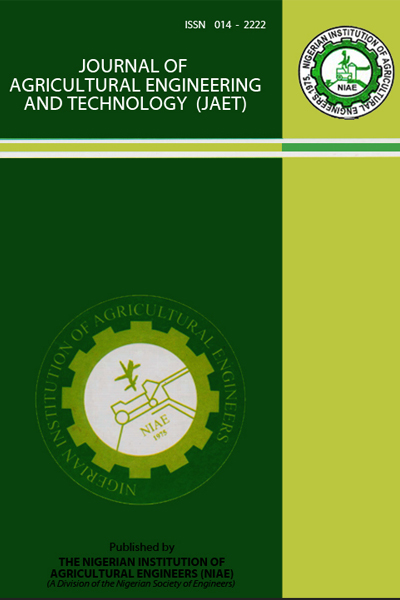THIN LAYER DRYING OF SOME SELECTED VEGETABLES IN A FORCED CONVECTION SOLAR DRYER WITH ENERGY BACKUP SYSTEM FOR CONTINUOUS DRYING OPERATION
Keywords:
Drying, forced convection, drying rate, continuous drying solar dryer, fruits and vegetables, drying kinetics, drying models, drying timeAbstract
Vegetables (tomato, pepper and ginger) are high moisture agricultural products that normally begin to undergo deterioration immediately after harvest. Heavy losses of the products usually occur as a result. Farmers employ open air sun drying to control the losses and this has the disadvantages of exposing the products to rain and dust contamination, insect and rodent attack and poor quality outputs. Most of the solar dryers already developed have the inability to continue the drying process during off sunshine hours of the day. If drying process has not come to completion prior to sunset, the operation has to be broken to commence again when the sun rises the next day. During the break in drying, normally at night, certain biochemical reactions can occur and lead to the commencement of material deterioration. The novel continuous drying solar dryer was developed to address the above problem, and it was used to determine the drying characteristics of tomato, pepper and ginger in the temperature and relative humidity ranges of
17 - 60 oC and 10 - 76%, respectively. Each product was dried in thin layer and moisture loss was monitored with time. Fourteen popular thin layer-drying models were tested using the data obtained. Results showed that tomato, pepper and ginger dried from 95 to 6.3%, 88 to 18.2% and 84 to 19.8% moisture contents in 15, 16 and 12 hours, respectively. The products dried mainly in falling rate phase. The values of effective diffusivity for tomato, pepper and ginger in the dryer were 2.1885×10-9 , 2.3101×10-9 and 2.4317×10-9m2/s respectively. Aghbashlo et al. model with randomized residual plots, lowest RMSE and highest R2 was the best model for predicting the drying behavior of tomato, pepper and ginger in the dryer.


